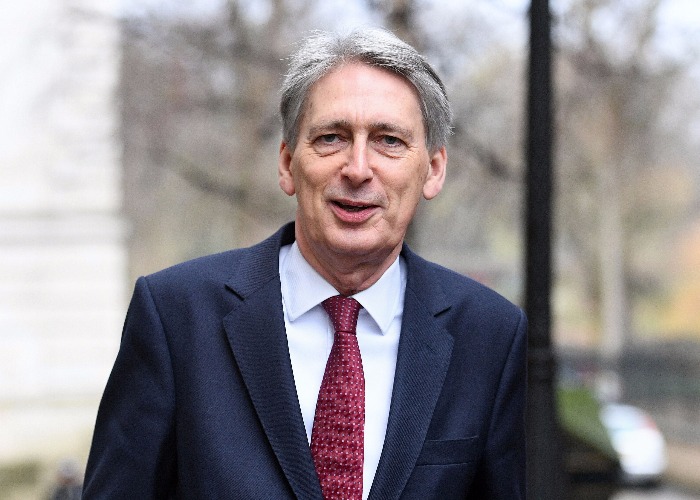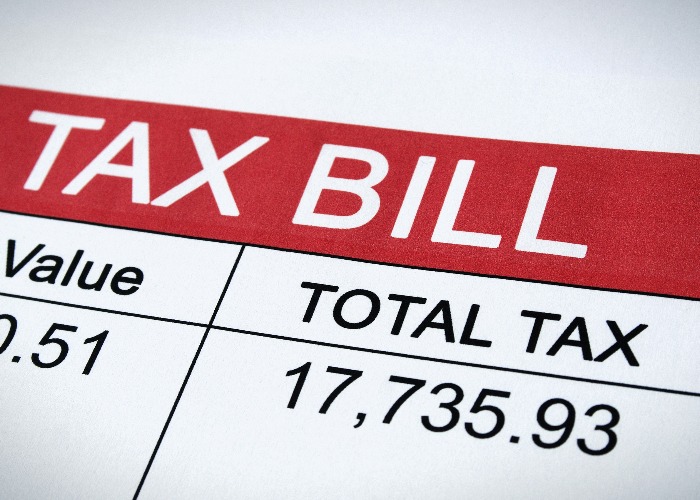Tax hikes: how likely are they and how much will they raise?

The Government has revealed how much hiking various taxes would raise as it bids to plug the gaps in its finances. Christine Toner takes a closer look at the numbers and asks the experts how likely we are to see each tax hiked.
The Government has warned that the State Pension pot will run out by the 2030s.
In a worrying example of just how bad things are, its Actuary’s Department, which looks after National Insurance contributions, has recognised that its finances are in a mess.
And so HMRC has pulled out its calculator and done the sums to illustrate how tax changes could solve not just this problem, but public finances in general.
But just how much would such hikes raise? And, more importantly, how likely are they to be implemented? We enlisted the help of Sarah Coles, personal finance analyst at Hargreaves Lansdown, to find out.
Increase basic rate of Income Tax by 1p

The Office for National Statistics (ONS) has estimated that if this change was brought in this April, it would raise £4 billion in its first year and £4.45 billion in each of the two subsequent years – a significant sum by anyone’s estimations.
However, Coles says it’s probably not on the agenda.
“This rise would affect all taxpayers and would be politically difficult to implement, so seems unlikely in the near future,” she says.
Verdict: Very unlikely
Increase 40% rate of Income Tax by 1p
Should the Government choose to hit the higher rate taxpayers only it would boost its coffers by £780 million next year (if introduced in April), and around £1 billion in each of the two subsequent years according to the ONS.
“It’s unlikely that the current Government would increase the 40% rate of tax,” says Coles. “It is currently in the process of raising the threshold for paying 40% tax to £50,000, lifting people out of paying the higher rate of tax, so it would seem counter-intuitive.
It’s also worth bearing in mind that changing Income Tax rates would be a particularly emotive topic. The 40% rate hasn’t changed since it was introduced in 1988, so it would be difficult for the Government to make this change.”
Verdict: Unlikely
Increase 45% additional rate of Income Tax by 1p
Increasing Income Tax for only the highest rate taxpayers would raise an estimated additional £60 million next year if introduced in April, £100 million the year after and £90 million the year after that.
“This would be most unexpected from the current Government, especially given that it’s in the process of raising the 40p threshold and that back in 2012 it helped cut the 50p tax band to 45p,” says Coles.
Verdict: Unlikely
Increase National Insurance main employee rate by 1%

This would be a major revenue raiser, bringing in £4.05 billion if it was introduced in April, followed by £4.2 billion and £4.3 billion in the two subsequent years.
However, if the Government was to look at increasing NI, it’s far more likely that those people working for themselves would be the target.
“When Philip Hammond proposed raising National Insurance rates for self-employed people in March 2017, he made the point that employees paid a higher rate, so increasing contributions for the self-employed would make things fairer,” says Coles.
“It’s why it’s more likely for him to target this again – rather than increasing the employee rate of NI, and making the disparity even bigger.”
Verdict: Unlikely
Increase National Insurance employer rate by 1%
Increasing the rate of National Insurance for employers would increase revenue £5.55 billion next year if it was introduced in April, £5.7 billion the year after and £5.85 billion the year after.
“But we are a long way from where we were back in 2011, when the then-Government added 1% to each rate,” says Coles.
“The current Government hasn’t pledged to not raise National Insurance rates, but hiking them across the board seems unlikely. What’s far more likely is that when Class 2 National Insurance rates for the self-employed are abolished in April 2019, the Government may revisit the rates for the self-employed.”
Verdict: Unlikely
Increase Corporation Tax by 1%
Perhaps businesses will take the hit? If so this would raise £1.9 billion next year if introduced in April, £2.4 billion the year after and £2.65 billion the year after that.
But it would involve a considerable U-turn from Chancellor Philip Hammond.
“Under the current Government, this fits into the ‘spectacularly unlikely’ category,” says Coles. “It has had a policy of cutting Corporation Tax and it intends to cut the rate from 19% to 17% by 2020.”
Verdict: Very unlikely
Change standard rate of VAT by 1%
This would be the biggest revenue-raiser on this list, bringing an additional £6 billion next year if it was introduced in April and £6.2 billion the year after.
However, the current Government has ruled out a VAT increase so it’s not on the cards for the foreseeable future.
Verdict: Unlikely
Insurance Premium Tax: change standard rate by 1%
Increasing IPT would raise £430 million every year for the next three years if introduced in April, according to ONS estimates. Successive Governments have used this mechanism to raise additional funds since the tax was introduced in 1994.
More recently the rate has risen far faster: from 5% in 2010 to 12% in 2017.
“More rises aren’t out of the question because when Philip Hammond increased the standard rate most recently, he highlighted that it remained lower than elsewhere in Europe,” says Coles.
“One limiting factor may be the potential negative reaction from taxpayers, especially given that motor insurance premiums hit a record high in 2017.”
Verdict: Possible
Fuel Duty: 1% change on petrol and 1% change on diesel

A rise in duty on petrol has the potential to raise £90 million next year if it is introduced in April, £85 million the following year, and £85 million the year after.
This rise in duty on diesel could raise £180 million next year if it is introduced in April, £185 million the year after and £190 million the year after that.
“These rises pale in comparison to the above-inflation increases established by the fuel duty escalator,” says Coles.
“Those rises have been frozen by successive Governments for the past eight years, so unfreezing remains an option. It’s easier to see future changes targeting diesel vehicles over environmental concerns.”
Verdict: Possible
With the majority of changes looking unlikely, is the HMRC’s exercise much ado about nothing?
“Tax rules are particularly complicated, so you can be pretty sure what when tax is cut in one area, it will be pushed up elsewhere,” says Coles.
“It’s a bit like trying to squash a balloon: the more you lean on it at one point, the more it will bulge out at another.
"Rather than second-guessing future changes, the most important thing for taxpayers is to take advantage of the rules and bands as they stand, and make sure that you use ISAs and pensions, to shelter as much of your savings and investments from tax as you can.”
You can boost your own income with a high-interest current account – take a look at some top deals with loveMONEY
Most Recent
Comments
-
Eventually, they will have to do what they should have done years ago and that is reduce the size of the state. There are thousands of no jobs in the public sector that we would not miss if they were to go. Governments in recent years have encouraged everyone they can to go to university. In reality, there are not enough jobs in the private sector to accommodate the graduates and governments feel obliged to create jobs for them which results in a massive drain on our country. Do you remember G Brown bragging about how he had created one million jobs? they were all in the public sector! Take any local or county council and it is plain to see that they have all been involved in empire building,
REPORT This comment has been reported. -
The problem is as many have commented. Expenditure is too high on welfare in teh UK and this is a residue of too many socialist governments who buy votes from the idle classes with handouts. Meanwhile those government rob those who actually make this economy work. So my solution? Stop any corporation transferring its headquarters to a tax have and thus avoiding corporation tax. I thinking Vodaphone,Amazon etc. If they make profits in teh UK they should be taxed in teh UK. What cannot as simple as this be enacted? Rather than pushing up insurance premiums of those responsible enough to insure their goods and vehicles.I despair. And IHT is criminal. All mymoney has been taxed during my lifetime why should it be taxed again?
REPORT This comment has been reported. -
An easy answer Any immigrant to these isles will not qualify for any hand outs/benefits, access to any NHS service, free housing etc. until they have been employed and paid all taxes and national insurance for a minimum of 3 years. Also with the increasing amount of people not arriving for doctor appointments start charging. This way there will be no need to increase any taxes or NI payments and for people like myself who have worked since the age of 17 and paid my dues I can enjoy using my bus pass in the very near future!
REPORT This comment has been reported.
Do you want to comment on this article? You need to be signed in for this feature









08 February 2018